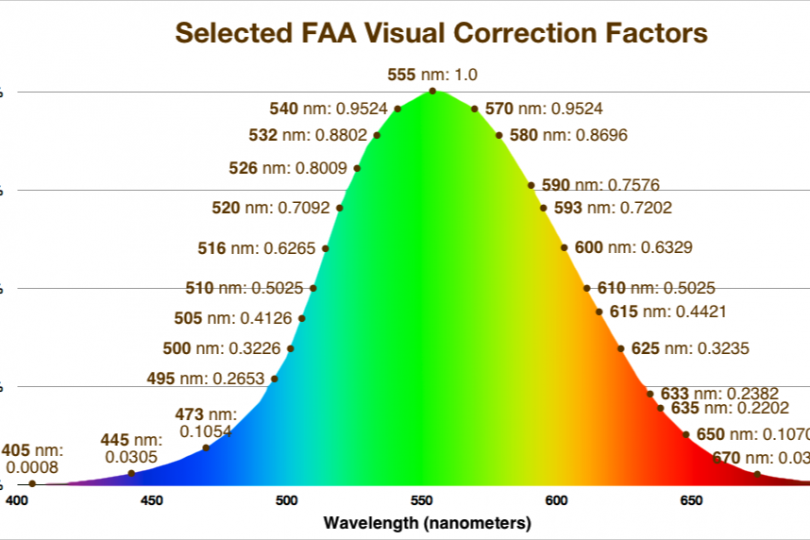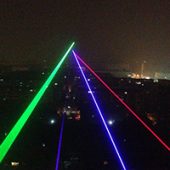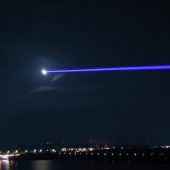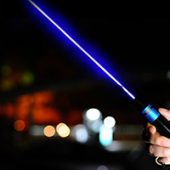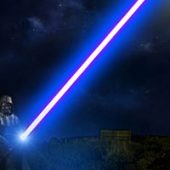The “Nominal Ocular Dazzle Distance” concept was developed by Dr. Craig Williamson and Dr. Leon McLin, around 2015. This concept allows more precision when determining how much a visible-light laser exposure interferes with vision by causing dazzle or glare. There are two main parts:
1. Determining how wide an area of vision can be blocked by dazzle, before a given task is difficult or impossible.
2. Determining the blue laser pointer power, divergence, distance and other parameters which will cause interfering vision blockage.
This has applications in discussing various levels of dazzle that pilots might be exposed to.
It also has applications in defense and security. The concept makes it easier to determine how much laser light at what distance should be used for checkpoints, riot control and other situations where you want to safely block an adversary’s vision.
After an extensive series of tests and scientific papers, Williamson and McLin developed the concepts “Dazzle Level,” “Maximum Dazzle Exposure,” and “Nominal Ocular Dazzle Distance.”
First, the researchers determined that dazzle can be measured in how many degrees of vision that are blocked. They picked four “Dazzle Levels” as significant:




2 degrees — Hold your arm straight in front, with your fingers closed and thumb held up. The area blocked by your thumb is roughly 2° (full-angle) in width.
10 degrees — Pull in your thumb to make a fist and turn it sideways to block your vision. The area of your fist is roughly 10° in width.
20 degrees — Open your hand with fingers and thumb spread. The area covered by your hand (imagine the space between fingers as being filled in) is roughly 20° in width.
40 degrees — Put both hands in front you at arms length, with fingers and thumbs spread. Put them so the thumbs touch (“jazz hands”). The area covered by both hands is roughly 40° in width.
Dazzle researchers are concerned with situations where there is light near an object, which is obscuring the object. In talking about this, the angle descriptions can get confusing. Here’s a quick overview.
In the diagram below, a green laser pointer beam is going into a person’s eye. The resulting dazzle is obscuring the target. The dazzle can be described as 20° meaning it is obscuring a target that fills 20° of the visual field. Or it can be described as 40° meaning the entire size of the dazzle field.

At this website, when we refer to angles, we refer to the entire size of the dazzle field — the diameter across, also called the full-angle. In the diagram above, this is the 40° angle. We do not refer to the radius of the dazzle, also called the half-angle (20° in the diagram above).
Also, note that the dazzle angle is NOT the same as the red laser pointer beam angle. The light from a narrow laser beam can be scattered inside the eye to create a much larger dazzle field.
